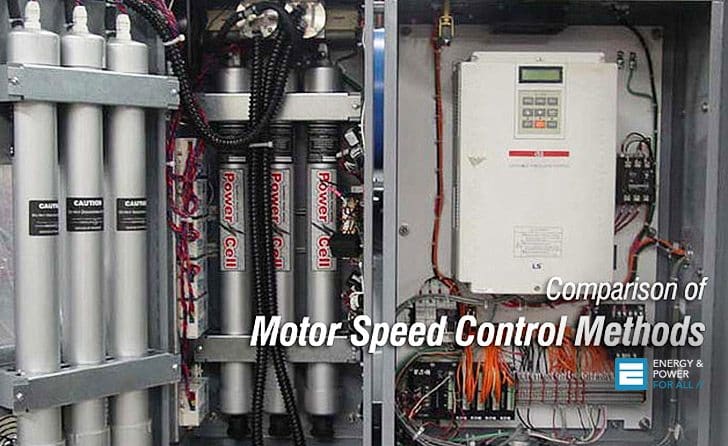Why motor speed control?
It is often desirable to control the motor speed, usually for reasons process control for such variables as flow or pressure. Such applications as fans and pumps often have varying output requirements, and control of the motor speed is more efficient than mechanically limiting the process output with such devices as throttling valves or dampers.The reason for this is due to the fact that for centrifugally-based processes (such as fans and centrifugally-based pumps), the following relationships exist:
Torque = RPM2
Power = RPM3
So, for these types of processes the torque required to turn them is proportional to the square of the speed.
But, the power required to turn them is proportional to the cube of the speed,
and this is what makes motor speed control economically attractive. To
further this argument, consider the energy wasted when mechanical means
such as the throttling valves or dampers are used to control a process
which is being driven from a motor running at full speed.
Adjustable-speed drives (ASDs)
By far the most commonly-used AC motor control method is the use adjustable-speed drives. In most commercial and industrial environments these have supplanted virtually every other motor speed control method.An adjustable-speed drive works on the principle of varying the frequency to vary the speed of the motor. Recall that from equations above the synchronous speed of a motor is a function of both the system frequency and the number of poles of the motor. By varying the frequency, the motor speed may be varied so long as the motor is equipped to dissipate the heat at reduced speeds.
Unlike soft-starting, specialized definite-purpose inverter-rated motor designs are preferred since reduced-speed operation can cause thermal issues and overspeed operation can result in safety issues.
Further, pulse-width modulated (PWM) drive outputs can cause repetitive voltage overshoots referred to as ringing, which can reduce the life expectancy of a general-purpose motor. The motor manufacturer should be consulted before applying a general-purpose motor in an adjustable-speed drive application.
Click here for full article

No comments:
Post a Comment